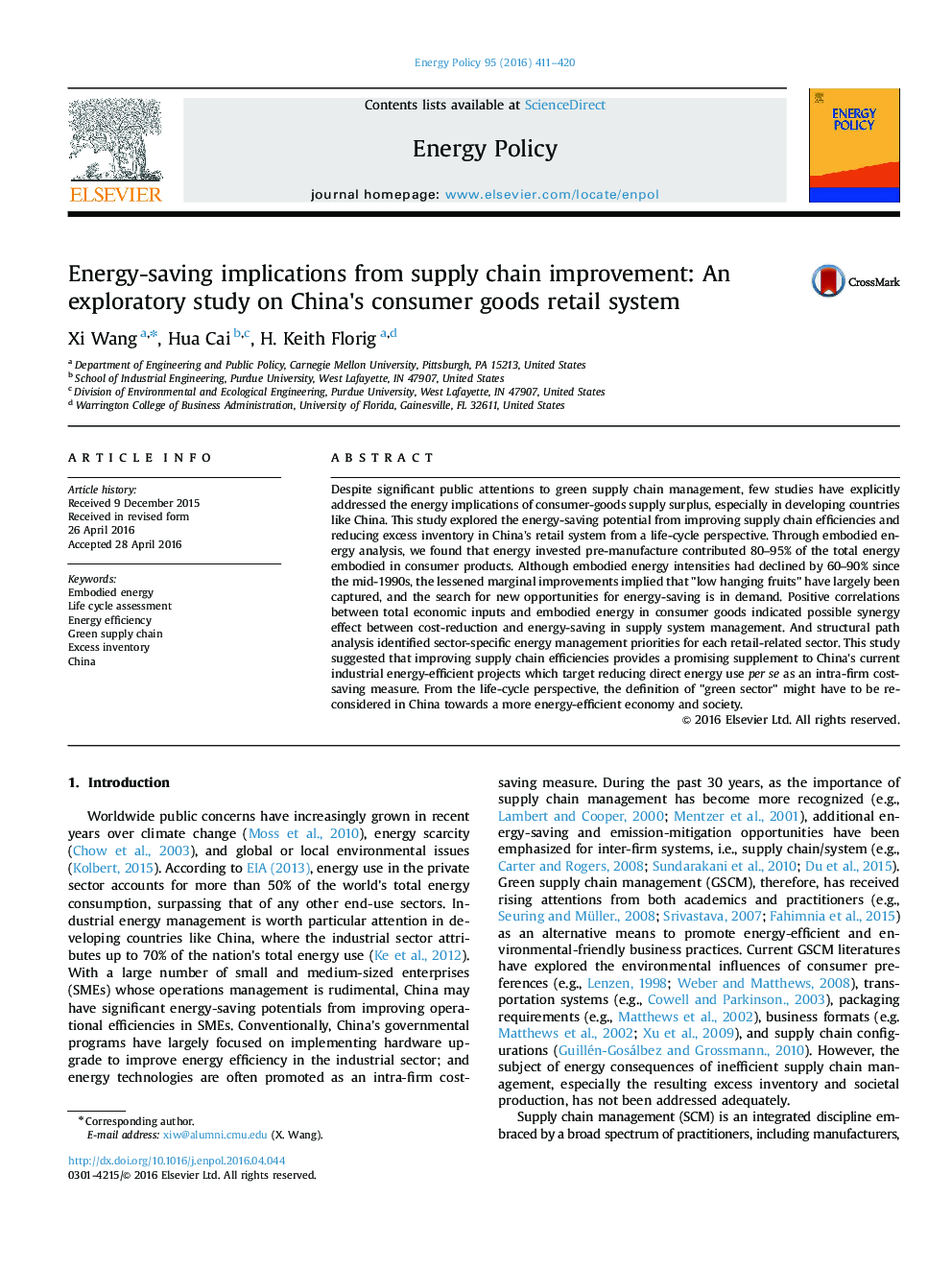| Article ID | Journal | Published Year | Pages | File Type |
|---|---|---|---|---|
| 7399302 | Energy Policy | 2016 | 10 Pages |
Abstract
Despite significant public attentions to green supply chain management, few studies have explicitly addressed the energy implications of consumer-goods supply surplus, especially in developing countries like China. This study explored the energy-saving potential from improving supply chain efficiencies and reducing excess inventory in China's retail system from a life-cycle perspective. Through embodied energy analysis, we found that energy invested pre-manufacture contributed 80-95% of the total energy embodied in consumer products. Although embodied energy intensities had declined by 60-90% since the mid-1990s, the lessened marginal improvements implied that "low hanging fruits" have largely been captured, and the search for new opportunities for energy-saving is in demand. Positive correlations between total economic inputs and embodied energy in consumer goods indicated possible synergy effect between cost-reduction and energy-saving in supply system management. And structural path analysis identified sector-specific energy management priorities for each retail-related sector. This study suggested that improving supply chain efficiencies provides a promising supplement to China's current industrial energy-efficient projects which target reducing direct energy use per se as an intra-firm cost-saving measure. From the life-cycle perspective, the definition of "green sector" might have to be reconsidered in China towards a more energy-efficient economy and society.
Related Topics
Physical Sciences and Engineering
Energy
Energy Engineering and Power Technology
Authors
Xi Wang, Hua Cai, H. Keith Florig,
